Choose the Best Thermal Spraying Service for Your Project
Which Thermal Spraying Services Are Best?
Thermal coat spray is a versatile and advanced process used to enhance, restore, or modify the surface properties of materials. This technique involves the projection of molten or semi-molten materials onto a substrate, forming a durable coating that protects against wear, corrosion, heat, and erosion. By extending the life and performance of treated components, thermal coat spray is widely used in industries such as earth moving and pumps.
Importance of Selecting the Right Thermal Spraying Service
Choosing the appropriate thermal coat spray service is essential for achieving the desired results and ensuring the longevity of your component or project. With so many options available, it’s important to match the right technique to the specific requirements of your industry and operating environment.
A well-chosen thermal coat spray service not only enhances surface performance but also provides cost-effective maintenance and repair solutions. At New Metal Surfaces, we
guide you in selecting the best materials and methods for your needs, effectively addressing the technical challenges of various coating applications.
Types of Thermal Spraying Techniques
1. High-Velocity Oxygen Fuel (HVOF)
The high-velocity oxygen fuel (HVOF) technique produces particularly high-quality, dense, and strong coatings. It’s especially beneficial for applications requiring extreme wear and corrosion resistance, such as in marine and industrial environments, where durability and performance are critical.
HVOF uses a combination of oxygen and a fuel gas to generate a high-velocity flame through which the powder material (metal, alloy, or ceramic) is fed. The particles are heated and accelerated to supersonic speeds before impacting the substrate. The rapid cooling of the particles upon contact forms a very dense and well-bonded coating.
2. Arc Spray
Arc spray, also known as twin wire arc spraying, utilises an electric arc to melt feedstock wires that are typically made of zinc, aluminum, or an alloy. This process is known for its excellent coating quality and high deposition efficiency.
Arc spray provides a cleaner operation with relatively higher production rates compared to flame spray, making it suitable for larger-scale projects. It’s particularly effective for applications requiring thick coatings and is commonly used for anti-corrosion purposes in components.
3. Flame Spray
Flame spray coating is one of the most accessible and widely used thermal spraying techniques. It’s particularly valued for its simplicity and cost-effectiveness, making it ideal for a wide range of applications, from restoration works to enhancing mechanical properties of industrial parts.
The method employs an oxy-fuel flame to melt metallic or ceramic feedstock, which is in the form of powder. The molten material is then sprayed onto the substrate using compressed air, creating a robust coating that adheres well to the base material.
Factors to Consider When Choosing Thermal Spraying Services
Assessing the Material Requirements for Your Project
The environment in which the coated component will operate is a critical factor in selecting the appropriate thermal spraying technique and material. Conditions such as exposure to corrosive chemicals, fluctuating temperatures, and mechanical stress will influence the integrity and performance of a coating.
For instance, components used in marine environments require coatings that can withstand saltwater corrosion, while parts used in high-temperature settings might need a coating that can resist thermal degradation.
By thoroughly understanding the operational conditions, New Metal Surfaces can tailor the material choice — whether metal, alloy, ceramic, or composite — to meet the specific demands of the environment. This ensures optimal performance and longevity of the coating.
Analysing the Service Life Expectations
The expected service life of a component is integral in determining the type of thermal spraying process used. Different techniques offer varying degrees of coating durability and thickness, which can affect the longevity of the part under specific operational stresses.
For example, HVOF coatings are chosen for their dense, strong bond, making them suitable for components that endure high wear and tear, which extends the service life. Understanding these expectations allows our team to make informed decisions about the cost-effectiveness of various spraying options and their potential return on investment over the lifecycle of the component.
Coating as an Investment
A cost-benefit analysis involves evaluating the upfront costs of different thermal spraying techniques against the costs of not investing in coating (and your machinery). Coatings provide durability, cover maintenance needs, and increase operational efficiency, which saves money in the long run.
For example, continually replacing broken parts instead of proactively coating them is going to cost more than some simple coating investments to begin with. The reduced need for frequent replacements or repairs offsets the higher initial expenditure, making it a worthwhile investment — especially for high-stakes applications.
Industry-Specific Applications of Thermal Spraying Services
Thermal Spraying in the Earth Moving Industry
In the earth moving industry, equipment is subject to extreme mechanical wear and environmental exposure. Thermal spraying is used extensively to enhance the durability and performance of moving parts. Coatings like tungsten carbide applied through processes such as HVOF provide a hard, wear-resistant surface that significantly extends the life of these components, reducing downtime and maintenance costs.
Thermal Spraying for Drills
Drilling equipment, whether used in mining, oil, or gas extraction, operates under some of the most challenging conditions, facing constant abrasion, erosion, and corrosion. Thermal spraying offers a solution by applying protective coatings to drill bits and other components, increasing their resistance to wear and corrosion. Materials used typically include chromium carbide and nickel-based alloys, which are known for their durability and resistance to high temperatures and corrosive substances.
Thermal Spraying for Pumps
Pumps used across various industries, from water treatment to chemical processing, benefit greatly from thermal spray coatings applied to impellers, casings, and seals. Doing so protects against the corrosive and erosive effects of the fluids being pumped. This extends the service life of these parts while enhancing the efficiency and reliability of the pumps. Stainless steel and ceramic coatings are commonly used here due to their excellent corrosion resistance and mechanical properties.
Navigating the Challenges and Best Practices in Thermal Spraying
Common Pitfalls in Thermal Spraying and How to Avoid Them
Thermal spraying comes with its challenges such as porosity, oxidation, and improper bonding, which can compromise the integrity of the coating. To avoid these pitfalls, quality control is crucial. A part of this includes carefully managing the spraying parameters such as temperature, velocity, and material quality. At New Metal Surfaces, our skilled Technicians and advanced monitoring and control equipment also ensure coatings are applied consistently and correctly.
Tips for Collaborating with Thermal Spraying Service Providers
Successful thermal spraying projects require effective collaboration between clients and service providers, like New Metal Surfaces. If you’re looking for a new provider, or need to engage one for the first time, it’s important to go with someone who holds specific, proven experience in your industry. When you do, you’ll receive more nuanced insights into the best materials and methods for your application.
Clear communication about project goals, timelines, and budget is also vital. Additionally, regular updates and meetings will help address any issues promptly, ensuring that the project stays on track and meets all specifications and standards.
Let’s recap.
When you engage New Metal surfaces, these are some of the factors we’ll explore with you to get a thorough understand of the projects requirements.
- Material and Environment: The specific conditions in which your component will operate (such as potential exposure to corrosive elements, extreme temperatures, and mechanical wear) are critical to choosing the correct thermal spray.
- Service Life Expectations: We consider the expected duration of service for the component, and select a coating that offers durability without the need for frequent maintenance or replacement.
- Cost-Benefit Analysis: We’ll help you evaluate the initial cost against the long-term benefits of various thermal spraying methods. High-quality coatings can offer significant savings over time through reduced maintenance and longer service intervals.
- Industry-Specific Applications: We’re aware of the distinct requirements and proven solutions within a range of industries and leverage industry-specific expertise accordingly.
- Common Challenges: We address potential pitfalls (such as porosity or improper bonding) early and utilises advanced control systems and skilled Technicians to ensure a smooth application.
Make the Right Decision for Your Project.
At New Metal Surfaces, we offer expert thermal coat spray services tailored to your unique project requirements. Whether you need wear-resistant coatings, anti-corrosion solutions, or custom applications, our team delivers high-quality results that ensure the longevity and efficiency of your components.
Contact us today to discuss how our thermal coat spray solutions can benefit your next project.


